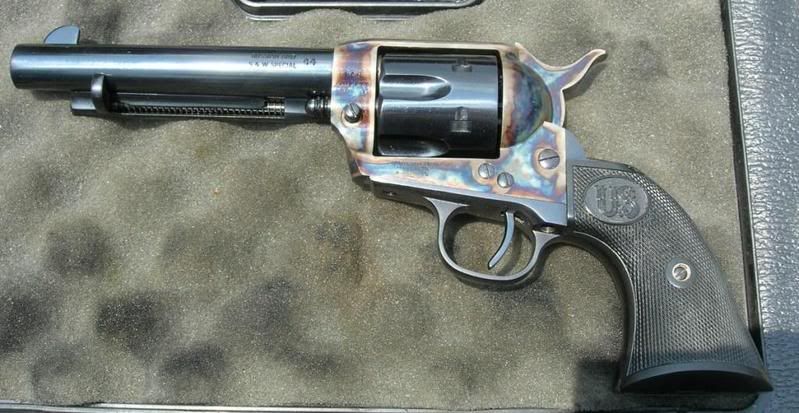Quote:
|
I have never seen a case hardened frame or slide on either either the 1911 or 1911A-1.
|
What were you looking for? Case colors like that used by Trunbull?

Trunbull does apply these case colors to M1911's but it is primarily decorative.
http://www.turnbullmfg.com/gun-categ...ll-model-1911/
The beautiful case colors found on vintage or replica firearms is a form of case hardening. I think it was originally unintended, but after carbon diffusion into a low carbon steel surface, in contact with bone and leather, beautiful colors resulted. These colors are also delicate and will wipe off. If the colors are gone that does not mean the surface was not case hardened. I don't know why it is now a specialty treatment, but the bone and leather processes were replaced by salt nitrate baths and methane gas at high temperature.
Take a look at the huge parts being carburized or "case hardened" by this firm.
Carburizing
http://www.metlabheattreat.com/carburizing.html
Wiki:
https://en.wikipedia.org/wiki/Carburizing
Carburizing,[1] carburising (chiefly British English), or carburization is a heat treatment process in which iron or steel absorbs carbon while the metal is heated in the presence of a carbon-bearing material, such as charcoal or carbon monoxide. The intent is to make the metal harder. Depending on the amount of time and temperature, the affected area can vary in carbon content. Longer carburizing times and higher temperatures typically increase the depth of carbon diffusion. When the iron or steel is cooled rapidly by quenching, the higher carbon content on the outer surface becomes hard due to the transformation from austenite to martensite, while the core remains soft and tough as a ferritic and/or pearlite microstructure.[2]
This manufacturing process can be characterized by the following key points: It is applied to low-carbon workpieces; workpieces are in contact with a high-carbon gas, liquid or solid; it produces a hard workpiece surface; workpiece cores largely retain their toughness and ductility; and it produces case hardness depths of up to 0.25 inches (6.4 mm). In some cases it serves as a remedy for undesired decarburization that happened earlier in a manufacturing process.
I am of the opinion that WW2 era M1911 frames and slides were case hardened, or carburized, using modern processes that did not leave a decorative surface finish. I know my Garand parts were carburized. You can test the part with a file. If the file does not bite on the surface, but get below the surface, the metal is soft, that part was case hardened or carburized.